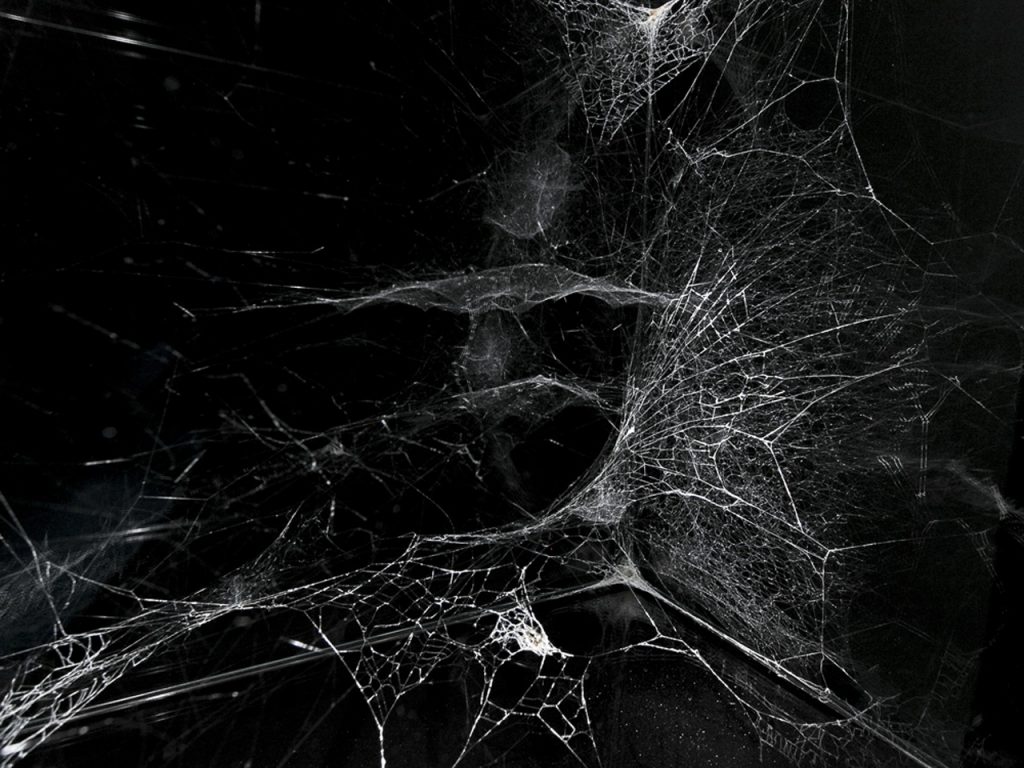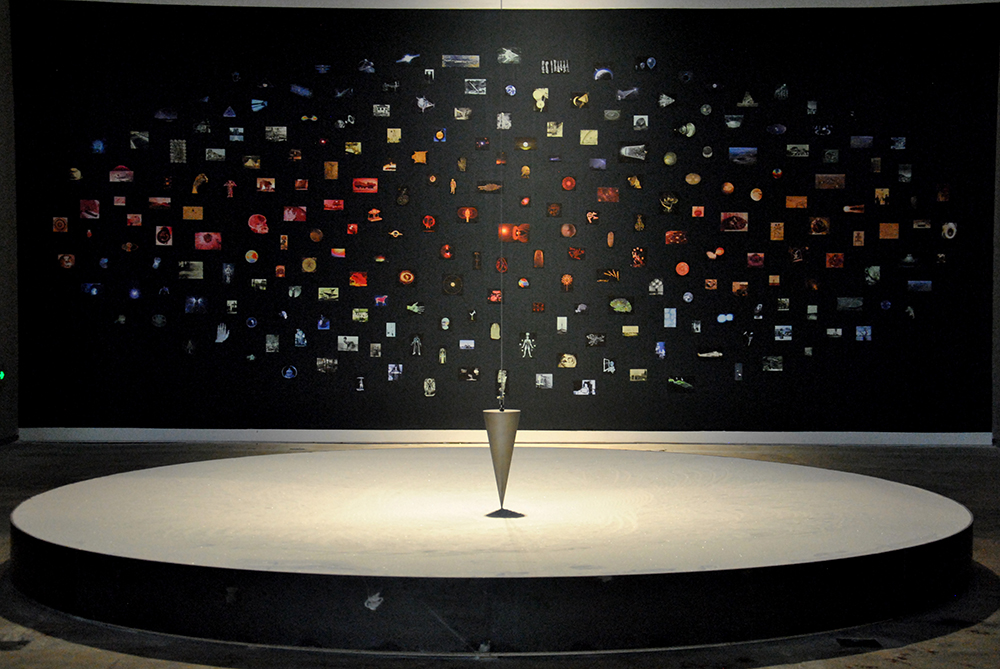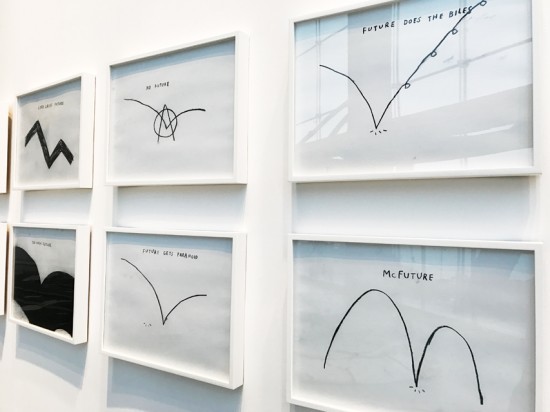ACA project visited the 11th Shanghai Biennale before its closing. Review on one of the key artistic events of the Asian scene.
Launched in 1996, the Shanghai Biennale has emerged in two decades as one of the most influential international contemporary art biennials in China and Asia. Under a different theme at each edition, it succeeds in bringing together artists and curators from all over the world and to make dialogue between the local and international scene. The Shanghai Biennale, which has been hosted by The Power Station of Art since 2012 – a former powerhouse that has been rehabilitated as a museum – spreads over several thousand square meters and three levels, featuring more than 100 artists and artworks.
« Why not ask again? « , the enigmatic title of the 2016 Shanghai Biennale, is asked by the Raqs Media Collective, curator of this eleventh edition. « Does memory place limits on the horizons of perception? », « What is the nature of nature? », « How long are the shadows? » or « What happens when worlds collide? », are questions raised by the selected artists during the course. Far from the ambition of providing answers, « Why not ask again? » seeks to make us think differently about the world as we think we know it and perceive it. As a challenge imposed on the mind, the exercise reveals itself as being amazing, almost playful and a starting point of many discoveries. The works exhibited, oscillating between art and technology, offer a multiplicity of points of view, observations and experiences.
ACA project s’est rendu à The Power Station of Art visiter la 11ème Biennale de Shanghai avant que celle-ci ne ferme ses portes. Retour et coups de cœur sur l’un des événements artistiques phares de la scène asiatique.
Lancée en 1996, la Biennale de Shanghai s’est imposée en deux décennies comme l’une des biennales internationales d’art contemporain les plus influentes de Chine et d’Asie. Sous un thème différent à chaque édition, elle parvient à réunir artistes et curateurs du monde entier et à faire dialoguer la scène locale et internationale. Accueillie depuis 2012 par The Power Station of Art – une ancienne centrale électrique réhabilitée en musée – la Biennale de Shanghai se développe sur plusieurs milliers de mètres carrés et trois niveaux, présentant plus d’une centaine d’artistes et d’œuvres.
« Why not ask again ? », titre énigmatique de la Biennale de Shanghai 2016, est posé par le collectif Raqs Media, curateur de cette onzième édition. « Est-ce que la mémoire se trouve limitée par notre perception ? », « Quelle est la nature de la nature ? », « Combien mesurent les ombres ? » ou encore « Que se passe-t-il lorsque deux mondes entrent en collision ? » sont des interrogations soulevées au gré du parcours par les artistes sélectionnés. Loin de l’ambition d’apporter des réponses, « Why not ask again ? » cherche à nous faire réfléchir différemment sur le monde tel que nous pensons le connaître et le percevoir. Tel un défi imposé à l’esprit, l’exercice se révèle émerveillant, presque ludique et point de départ de nombreuses découvertes. Les œuvres exposées, oscillant entre art et technologie, offrent une multiplicité de points de vue, d’observations et d’expériences.

Ivana Franke, « Disorientation station »
Through three immersive spaces, the Croatian artist Ivana Franke plays with the limits of our brain to perceive space and time. Here, light or speed alter our usual ability to perceive our environment, and invite us to imagine it differently.
A travers trois espaces immersifs, l’artiste croate Ivana Franke joue avec les limites de la perception de l’espace et du temps par notre cerveau. Ici, la lumière ou la vitesse altèrent notre capacité habituelle à percevoir notre environnement, et nous invitent à l’imaginer différemment.

Tomas Saraceno, « Sonic Cosmic Webs »
The Argentine artist Tomas Saraceno draws a parallel between the cosmos and the webs woven by spiders, similar to small universes having their own space-time.
L’artiste argentin Tomas Saraceno dresse un parallèle entre le cosmos et les toiles tissées par les araignées, similaires à de petits univers ayant leur propre espace-temps.

Marjolijn Dijkman, « Lunar Station »
Between art and science, the pendulum sliding on white sand placed in front of a wall of scientific archives made by the Dutch artist Marjolijn Dijkman, offers a quasi-meditative space conducive to the interrogation on the place of humanity within the universe.
Entre art et science, le pendule glissant sur du sable blanc placé devant un mur d’archives scientifiques réalisés par l’artiste néerlandaise Marjolijn Dijkman, offre un espace quasi méditatif propice à l’interrogation sur la place de l’humanité au sein de l’univers.

MouSen+MSG, « The Great Chain of Being – Planet Trilogy »
Surely the most incredible work of this biennale, the monumental installation of Chinese MouSen + MSG invites us to be witness of what looks like a lunar crash, an end of time, interpreted by the prism of art. The spectator passes through several apocalyptic spaces telling the end of the world, as one is the character of an overwhelming story.
Sûrement l’œuvre la plus incroyable de cette biennale, l’installation monumentale du chinois MouSen+MSG nous rend témoin de ce qui ressemble à un crash lunaire, une fin des temps interprétée par le prisme de l’art. Le spectateur traverse d’un pas mal assuré plusieurs espaces apocalyptiques racontant la fin du monde, tel le personnage d’une histoire bouleversante.

Christine Sun Kim, « Future Series »
In American sign language, the concept of the future is expressed by the movement of two semi circles with the palm of the hand. With humor and poetry, the American artist Christine Sun Kim proposes drawings of her multiple interpretations of the future.
En langage des signes américain, le concept de futur s’exprime par le mouvement de deux demi-cercles avec la paume de la main. Avec humour et poésie, l’artiste américaine Christine Sun Kim propose en dessin de multiples interprétations du futur.
« Why not ask again? », the 11th Shanghai Biennale at The Power Station of Art, or the successful challenge of art as (re-)questioning our world.
« Why not ask again ? », 11ème édition de la Biennale de Shanghai à The Power Station of Art, ou le pari réussi de l’art comme (re-)questionnement de notre monde.
